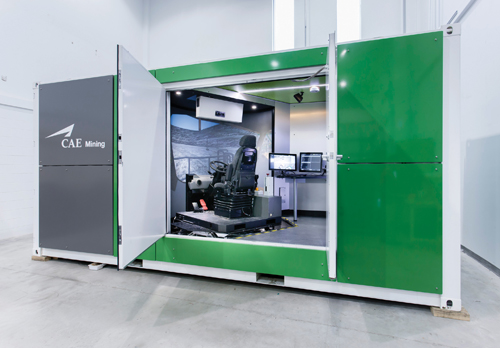
Wherever life may take us, we are all born with the same basic skill set. However it is from this point onwards that we each develop and progress as human beings in hugely different ways from one another. Nevertheless, the vast majority of us will one day find ourselves in a similar position to when we were young in that we will require training to embark on our future career paths. Indeed, whether the person you meet on the street is a call centre worker, a surgeon or a mine operator they will all share in common the fact that they had to undertake the necessary training in order to excel at what they do.
Throughout the world there are countless bodies, organisations and institutions that cater for the training needs of people entering all manner of professions, yet it takes something special to be recognised as a global leader in your field when you exist in such a populous market. One such company is CAE, a foremost provider of modelling, simulation and training for civil aviation and defence, employing approximately 8,000 people at more than 100 sites and training locations in 30 countries.
Founded in 1947, CAE today boasts a highly diversified business, ranging from the sale of simulation products to providing comprehensive services such as training and aviation services, integrated enterprise solutions, in-service support and crew sourcing. The company applies simulation expertise and operational experience to help customers enhance safety, improve efficiency, maintain readiness and solve challenging problems.
It is these simulation capabilities that CAE is now leveraging in new markets such as healthcare and mining. From exploration to resource modelling, optimisation, mine design, scheduling and financial modelling, CAE Mining offers cutting edge software solutions that enable users to rapidly generate robust scenarios in a secure governance framework. These software solutions are integrated with adjacent offerings in consulting and training to ensure that CAE Mining offers the best support in the industry, maximizing the potential of mining assets.
“There are two key points of heritage that we have leveraged in order to develop into the business that we are today,” explains president, Damian McKay. “The first is the fact that CAE is recognised for training over 100,000 people a year to the highest regulatory standards. The second comes from the 25-plus years of history that we acquired through the purchase of The Datamine Group, a leading geological mine planning package that really led the field in terms if geology software, in April 2010.”
Since the acquisition of The Datamine Group, CAE Mining has continued to invest significant capital into expanding its software portfolio. In doing so it has strived to focus on the core themes of safety and productivity, looking at how it can help mines become smarter in regards to having better trained operators, a safer working environment and achieving higher productivity from existing asset bases. Meanwhile, from a geology perspective the focus is on helping clients discover what is actually under the earth, before identifying how best to execute work on a deposit by utilising CAE Mining’s consultant services and software tools.
“All across the mining industry,” McKay continues, “the primary message today is safety first. This is being driven by several factors, not least of all the hugely different levels of experience that exists in developing countries and the unique nature of the training environments themselves. What we are also witnessing within the mining sector is an increasing client focus on costs and productivity, and on getting the most out of all of their operators.”
As operations have spread across the world so too has a wealth of new technologies and approaches to mining. With each new industry development or innovation comes the need to provide fresh training of those workforces impacted by the changing landscape of the sector. “One sure-fire way to bring any project to its knees,” McKay stresses, “is to have untrained operators using multi-million dollar equipment in the wrong way. Therefore, being able to take people and using simulation to bring them up to speed with the latest techniques and methods has never been more essential.”
One of the most important and successful ways that CAE Mining offers high-quality training is through its CAE Terra Mining simulators. By building on CAE’s near 65 year history of perfecting the science of simulation, the company has been able to develop the next generation of fully-integrated simulation products for the mining industry, ranging from desktop trainers and e-learning to part-task trainers and high-fidelity simulators, all running on the same high-fidelity software.
The CAE Terra Mining simulators are the latest evolution of CAE’s leading-edge training solutions. The mining simulators cover a range of mining equipment and provide unparalleled realism with the most authentic experience, faithfully and fully replicating the equipment’s performance in normal and abnormal operations.
Backed up by the financial resources and added levels of diligence and oversight that you would expect to come from being part of a $1.8 billion global enterprise, CAE Mining continues to be greeted with a high level of excitement from mining companies of all sizes that it received when first entering the market. Understandably, it is this excitement that the company remains committed to building upon in the months ahead.
“We have experience some strong levels of growth in our different solution segments,” McKay concludes, “and we fully expect this to remain the case going forward. In an environment where we envision that the cost of bad decisions and poor training will increase in the years to come, we feel it is inevitable that the type of services that we provide will only gain in popularity. As such we will continue to expand the size of our team and our global reach, while at the same time investing in the research and development that will allow us to build upon our existing range of products.”
Written by Will Daynes, research by Paul Bradley



 CAEMining-Americas.Mining-Mar13-Bro-s.pdf
CAEMining-Americas.Mining-Mar13-Bro-s.pdf









